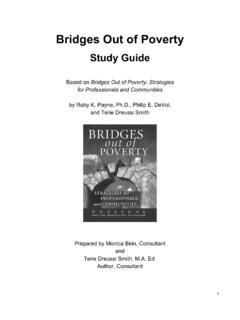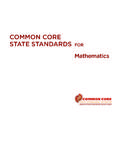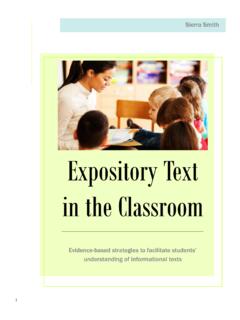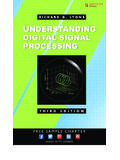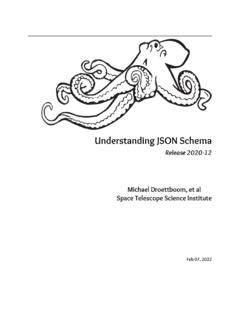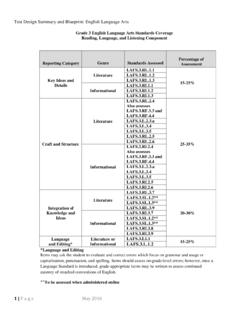Transcription of A FRAMEWORK FOR UNDERSTANDING POVERTY
1 A FRAMEWORK FOR. UNDERSTANDING . POVERTY . A CO GNI TI V E AP P R OAC H. Ruby K. Payne, Ruby K. Payne, A FRAMEWORK for UNDERSTANDING POVERTY : A Cognitive Approach 5th Revised Edition 248 pp. Bibliography pp. 207 230. ISBN 13: 978-1-938248-01-6. Copyright 2013 by aha! Process, Inc. Published by aha! Process, Inc. All rights reserved. No part of this book may be reproduced in any manner whatsoever without written permission, except in the case of brief quotations embedded in critical articles and reviews. For information, address aha!
2 Process, Inc. Box 727. Highlands, TX 77562-0727. fax (281) 426-5600. Copy editing by Dan Shenk and Jesse Conrad Book design by Paula Nicolella Cover design by Dunn+Associates Printed in the United States of America Table of Contents Introduction 1. Chapter 1 7. Resources, Reality,' and Interventions: How They Impact Situated Learning'. Chapter 2 31. Language and Story: How They Impact Thinking, School, and Work Chapter 3 43. Hidden Rules Among Classes: How They Impact Relationships with People Different from You Chapter 4 61.
3 The Situated Learning' Reality of Generational POVERTY : How It Impacts Navigation of One's Life Chapter 5 81. Role Models and Emotional Resources: How They Provide for Stability and Success Chapter 6 89. Support Systems and Parents: How They Impact the Ability to Do Homework and to Navigate School and Work Chapter 7 101. Creating Relationships: How and Why One Is Motivated to Learn and Change Chapter 8 107. Discipline: How to Manage Personal Behavior So One Can Win' in a Given Environment Chapter 9 119. Instruction and Improving Achievement: How to Live in the Abstract Representational World of School and Work Conclusion 141.
4 Appendixes 143. Appendix A 145. Resources and Interventions Appendix B 155. What Are the Causes of POVERTY ? Excerpt from UNDERSTANDING and Engaging Under- Resourced College Students Appendix C 165. What Information Does A FRAMEWORK for UNDERSTANDING POVERTY Have That Cannot Be Obtained Easily from Other Sources? Why Do Critics Love to Hate It and Practitioners Love to Use It? Appendix D 175. POVERTY Statistics (also available on aha! Process website). Appendix E 183. Where Do We Go from Here? How Do Communities Develop Intellectual Capital and Sustainability?
5 Appendix F 193. Study Guide Endnotes 199. Bibliography 207. Index 231. About the Author 239. Introduction I t has been nearly two decades since the original red book, A FRAMEWORK for UNDERSTANDING POVERTY , was published in 1995. It is now time to rewrite it with the new information that has been learned in these years and with more current research. So while many parts of the original book are still here, a good portion of the original book is updated with the contemporary research citations, new case studies, and explanations.
6 While some of this reference material is cited in the text itself, most of it can be found in this new edition's extensive Endnotes. In the intervening years, many practitioners have expanded on the ideas I intro- duced in 1995 and, in many cases, also have done their own original research. The work of countless scholars, researchers, and practitioners, along with the continuing work of my company, aha! Process, has contributed to greater under- standing of children's experience of POVERTY and the critical role schools can play in helping children and teens exit POVERTY when those schools have the tools they need to understand and respond with care.
7 In addition to education, I have been gratified by the way the work has expanded into other areas and arenas by those who understand and adapt the FRAMEWORK concepts to their particular set- tings. These include businesses, healthcare providers, social service agencies, religious entities, higher education, and Bridges Out of POVERTY communities. I believe that this book is even more necessary now than it was in 1995. Due to economic conditions, childhood POVERTY is on the rise. We have more informa- tion than ever on the economic costs of POVERTY not only to individuals, but to all of us.
8 Since 2002, the federal government's insistence on publishing stu- dent achievement data has shown just how great the achievement disparities are between economically disadvantaged children and their more advantaged peers. 1. A FRAMEWORK FOR UNDERSTANDING POVERTY . This work is not without its critics. Early in the new century, a group of social justice professors from higher education became quite vocal in their criticism of the work because it did not approach POVERTY as a systems or exploitation issue, nor did it delve into associated correlates to POVERTY , especially race and gender.
9 (For a more in-depth discussion, see Appendix B on the multiple causes of pov- erty and the roles that race and gender in particular play.) Addressing those issues was never the purpose of the book. Many researchers, particularly those in institutions of higher education, have presented their largely theoretical views. My approach to POVERTY is eminently practical: Having worked for many years in schools and school districts, I know firsthand that teachers need down-to-earth, relevant strategies in addition to theory.
10 Their mission and it is a critically im- portant one is to reach the children in their classrooms. They are on the front lines of social change, one student at a time. The purpose of the book is to help those teachers, principals, district leaders, counselors, school nurses, and the many other educators who work with the poor to positively impact the opportunities of their students/clients by: 1. Naming the experience of generational POVERTY 2. Identifying the tools and resources necessary to become educated 3. Providing intervention strategies 4.
